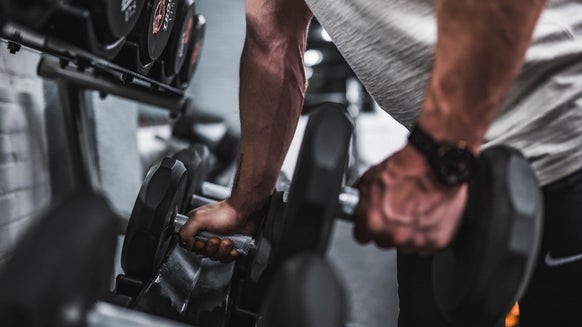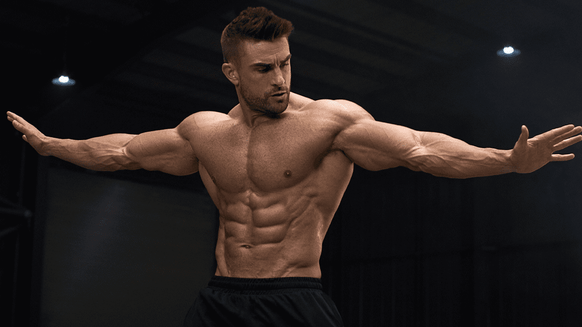Your Mega Guide To Strength Training | PT-Approved
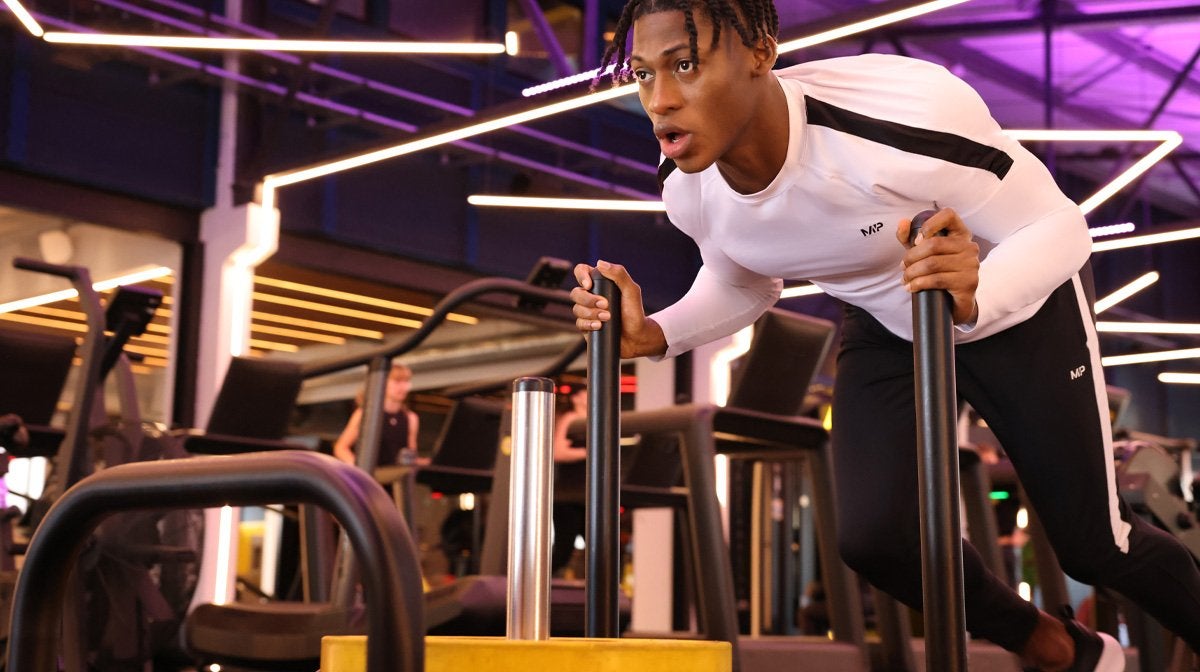
When most people think of the gym, they think of strength training. It’s a key part of fitness that can help you build muscle, manage your weight, and improve your overall health. But what exactly is it, and what does it involve?
Whether you’re a beginner or an experienced gym-goer, this comprehensive guide has everything you need to know about strength training.
What is strength training?
Strength training is basically just training with the aim of building strength over building muscle. You’ll still put on muscle if you strength train — it’s just not the main focus.
The most popular forms of strength training do involve barbells, dumbbells and gym machines, but this isn’t the only way to improve your strength. You could do body weight exercises and callisthenics, or use resistance bands and TRX machines.
Whichever your preference, progressive overload is the most important part of your training. To continue building strength, you’ll need to keep on challenging your muscles.
What are the 5 principles of strength training?
An effective strength training programme should cover these five key areas.
1. Overload
Basically, this means you need to keep lifting heavier or making your training more difficult (eg if you aren’t lifting weights, increase the reps or working time).
2. Progression
Ideally, you should limit progress to no more than 10% per week over 12 weeks. This means you can improve strength steadily but without neglecting form and correct technique.
3. Specificity
For example, if you want to do a pull-up, you need to tailor your training towards it, but you’ll also need to learn how to do the movement itself.
4. Rest and Recovery
But rest don’t mean staying still — active recovery like a light walk, swimming, or even yoga, are great ways to stay moving on days off.
5. Nutrition and Hydration
Staying hydrated and fuelling your body with the correct nutrition is essential if you want your strength training to deliver the best results.
What are the different types of strength training?
Strength training comes in many forms. Here are some of the main methods:
Hypertrophy Training
This style of training is one of the most common and well-known strength training methods. The aim is to build strength and increase muscle size through progressive overload and a mix of compound and isolated movements.
Circuit Training
There’s usually a set number of rounds to complete or a certain amount of time to work and rest for, and exercises are performed back-to-back, with a brief period of rest between them.
Bodyweight Training and Callisthenics
You can also use suspension trainers and resistance bands to aid in overload.
Powerlifting
Traditionally using low reps, and heavier load to build strength.
Olympic Lifting
Olympic lifting is a form of power training that features explosive movements, such as the snatch and clean and jerk, to help you move heavy weights from the ground to over your head.
Functional Fitness
Functional fitness balances strength and endurance training and features everyday movements like squatting, pulling, lunging, pushing, and bending.

Benefits of Strength Training
Improves strength
The main benefit of strength training is it makes you stronger. No matter which style or method you choose, the training will improve your strength, which should help you lift heavier and make everyday movements easier.
Increases muscle mass
Strength training overloads the muscles, which must then repair, leading to muscle mass growth.
Focuses on performance
Strength training is a great way to shift this focus to performance, which often has the added benefit of improving physique anyway.
Doesn’t need equipment
This means that even if you don’t have access to a gym or weights, you can still stay on track with your strength training.
Supports weight management
Greater muscle mass means a higher calorie daily calorie output, which can help with weight management.
How to start strength training
Remember to progressively overload, staying on lighter weights while you work on form, and make sure your programme hits all muscle groups in a balanced way and includes time for adequate recovery.
After you’ve come up with a plan and mastered your technique, gradually increase the weight or resistance to build strength steadily and reduce the risk of injury.
And for nutrition, try the Build Muscle Bundle.

A beginner's workout guide to building strength
Here’s a seven-day plan to get you started. It's a four-day split with four working days and three rest days, with two upper-body sessions, two lower-body sessions, two rest days, and one day of active recovery.
For more strength training inspiration, check out these lower body, upper body, and arm workouts.
Day 1 – Upper Body
Bench Press
Lie on a bench with your hands shoulder-width apart on the bar. Pinch your shoulder blades together, take a deep breath, and lift the bar up above your chest with your arms extended. Slowly lower the bar to the base of your sternum, bending at the elbow. Before the bar touches your chest, drive it back up by extending your elbows, squeezing your pecs, and driving your feet into the ground.
Barbell Row
Stand with your feet hip-width apart and soften your knees. Hinge forwards from your waist, making sure your back remains straight and your neck is in line with your spine. Hold the barbell so your hands are shoulder-width apart, palms facing downwards and arms straight with soft elbows. Engage your core, squeeze your shoulders together, and row the weight up until it touches your sternum. Slowly lower the bar back down and repeat.
Seated Shoulder Press
Sit on a bench with dumbbells racked on your shoulders in a neutral grip, and rotate your palms so they face forwards. Press the dumbbells overhead by extending your elbows and contracting your delts. Hold at the top, then slowly lower the dumbbells back to the starting position.
Start in a high plank position and slowly lower your chest towards the floor. Keep your abs engaged and bend your elbows. - Just before your chest touches the floor, push through your hands and return to the starting position.
If you need to make it easier, drop your knees to the floor and follow the same method.
Lateral Raise
Stand with your feet hip-width apart, holding a dumbbell in each hand at your side. Engage your core, keep your arms straight with a soft elbow, and raise your arms up until they’re in line with your shoulders. Hold, and then lower back down.
Biceps Curls
Stand with your feet hip-width apart, holding a dumbbell in each hand. Rest the back of your hands on your thighs. Start the movement by bending at the elbow and slowly raising the dumbbells up towards your chest. Once the dumbbells are at shoulder height, slowly return to the starting position.
Day 2 – Lower Body
Squats
Set the barbell on your back across your shoulder and stand with your feet hip-width apart. Keep your head up, back straight, and drive your backside back and down. Lower down until your hips are in line with your knees at 90 degrees. Hold at the bottom of the movement for two seconds, then drive through the feet into the floor to push yourself back up. Repeat for the required reps.
Romanian Deadlift
Stand with your feet shoulder-width apart, knees slightly softened. Hold the barbell with an overhand grip at the middle of your thighs. Brace your core and pull your lats down. Lower the barbell by hinging at the hip and keeping your back straight. When the barbell’s below your knee and level with your shin, drive your hips forward and through, bringing your body back up. Repeat to complete the set.
Hamstring Curls
Lie face down on the floor or on a hamstring machine. Squeeze your core, keep your back straight, and bend your knees bringing your lower legs up towards your lower back, and then slowly extend them back.
Leg Extensions
Hook your legs under the pads of a leg extension machine and hold the sides. Keeping your back against the backrest, lift your legs until they’re almost straight, hold, and the lower the weight back down to the starting position.
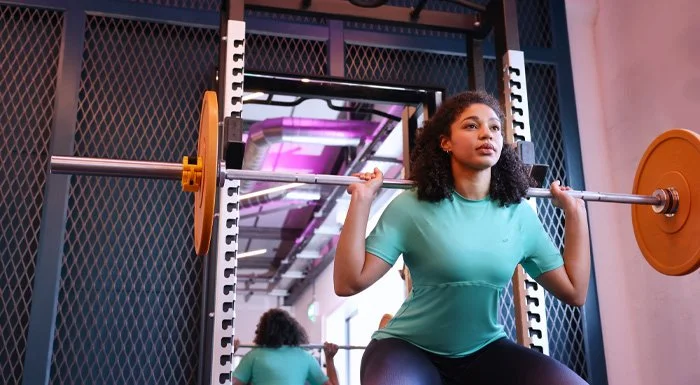
Day 3 – Rest
It's just as important to rest as it is to train - take day 3 to reset.
Day 4 – Upper Body
Incline Chest Press
Set the bench at an incline and hold the bar with your hands shoulder-width apart. Pinch your shoulder blades together, take a deep breath, and lift the bar above your chest with your arms extended. Slowly lower the bar to the base of the sternum, bending at the elbow. Just before the bar touches your chest, drive it back up by extending your elbows, squeezing your pecs, and driving your feet into the ground.
Deadlift
Stand with your feet hip-width apart, bring your shoulders over the barbell, and hinge at the hip to grab the bar. Drive your backside down to the floor, contract your lats, and lift your chest. Take a deep breath, and drive through the floor with your legs, keeping the bar tight to your body. Lock your hips out at the top, engaging your quads, glutes and lats, and then slowly lower the bar back to the floor. Repeat to complete the set.
Military Press
Sit on a bench with a barbell racked across the front of your shoulders, and hold with a neutral grip. Press the barbell overhead by extending your elbows and pushing your feet into the floor. Hold at the top, then slowly lower the barbell back to the starting position.
Single Arm Dumbbell Row
Stand with your feet hip-width apart, soften your knees, and hinge forward from the waist, keeping your back straight and in line with your spine. Pull the weight back up towards your chest, bending at the elbow. Once the dumbbell is at chest height, hold, and return. Complete the reps and then switch arms.
Triceps Dips
Place your hands shoulder-width apart on a surface behind you, hands facing forwards and arms straight. Bend your elbows and lower yourself towards the floor until your elbows are at 90-degrees, then push through your hands to drive yourself back upwards. Squeeze your triceps at the top of the movement, and repeat.
Day 5 – Lower Body
Front Squats
Set the barbell across the front of your shoulders and chest, hands in a neutral grip and feet hip-width apart. Keep your head up, back straight, and drive your elbows upwards, before pushing your bum back and down. Lower down until your hips are in line with your knees at a 90-degree angle. Hold at the bottom for two seconds, then drive through your feet into the floor to push yourself back up. Repeat for the desired reps.
Romanian Deadlift
Stand with your feet shoulder-width apart, knees slightly softened. Hold the barbell with an overhand grip at the middle of your thighs. Brace your core and pull your lats down. Lower the barbell by hinging at the hip and keeping your back straight. When the barbell’s below your knee and level with your shin, drive your hips forward and through, bringing your body back up. Repeat to complete the set.
Bulgarian Split Squat
Hold one dumbbell in each hand at your sides, one foot resting flat on a bench with your knee bent at 90 degrees. Start the movement by lowering your standing leg, hinging at the hip and bending the knee towards the floor. Pause when the knee touches the floor, then drive through your front foot to straighten your leg and return to the starting position.
Goblet Squats
Rack a dumbbell at your chest, holding it with both hands and keeping your feet hip-width apart. Lower down until your hips are in line with your knees at a 90-degree angle. Hold at the bottom for two seconds, then drive through your feet into the floor to push yourself back up.
Day 6 – Rest
Taking the time to rest will benefit you just as much as training - take day 6 to rest.
Day 7 – Active Recovery
Get out for a walk or do some yoga.
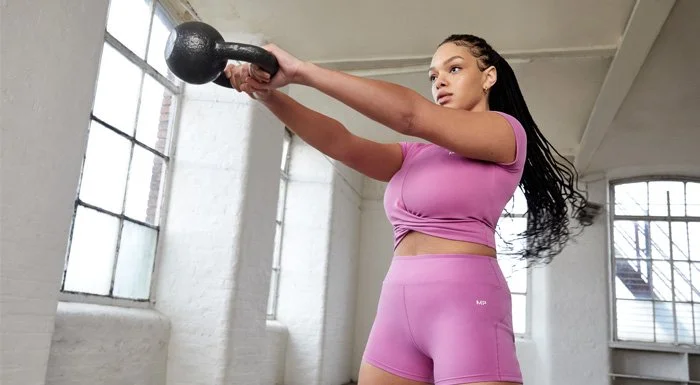
Upgrading your strength training workout plan
Once you’ve nailed the basics and are hitting workouts consistently with good form, you can take it to the next level with these four principles:
Everything you need to know about strength training
Still have questions? We've covered some of the most frequently asked questions below.
Is there a golden rule to strength training?
The best rule to follow is to train smart. While it’s good to switch things up every now and then, consistency and commitment is what gets results. If you follow the key principles and make the most of every workout, you should be well on your way to reaching your goals.
How long should you strength train a day?
The length of a session will differ based on your training method and programming, but it's good to aim for around 60-90 minutes if doing fewer sessions over a week. For those training more frequently with a bigger split, a session from around 45-60 minutes is plenty.
How many times a week should you strength train?
Again, this depends on your training method, programming, and fitness levels. 2-3 sessions per week is a good place to start for beginners, 4-5 is about right for more experienced gymgoers, and 5-7 is possible for extremely experienced trainers.
What is the difference between weightlifting and strength training?
Weight training and strength training are similar, but the focus of the two training styles is different. Weight training is more focused on the method while strength training is more focused on the outcome.
Take Home Message
Keep challenging your muscles, focus on form, and get plenty of recovery, and you should soon be on your way to getting stronger.
TRY THESE NEXT:
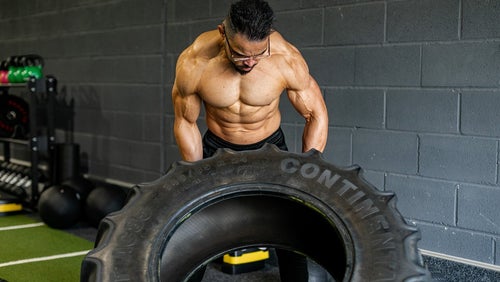
How To Train Like A Bodybuilder | Athlete guides
We never said it was easy ...
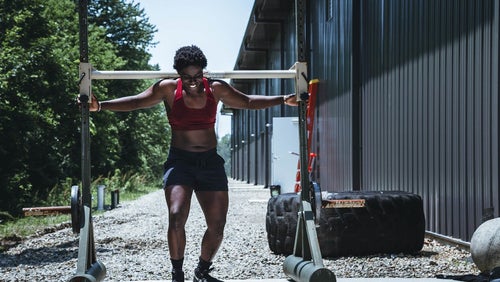
How To Train Like A Strongman | Athlete Guides
Time to test your strength.

Top Cardio Exercises at Home or the Gym | Cardiovascular Training
There's more to cardio than the treadmill.




